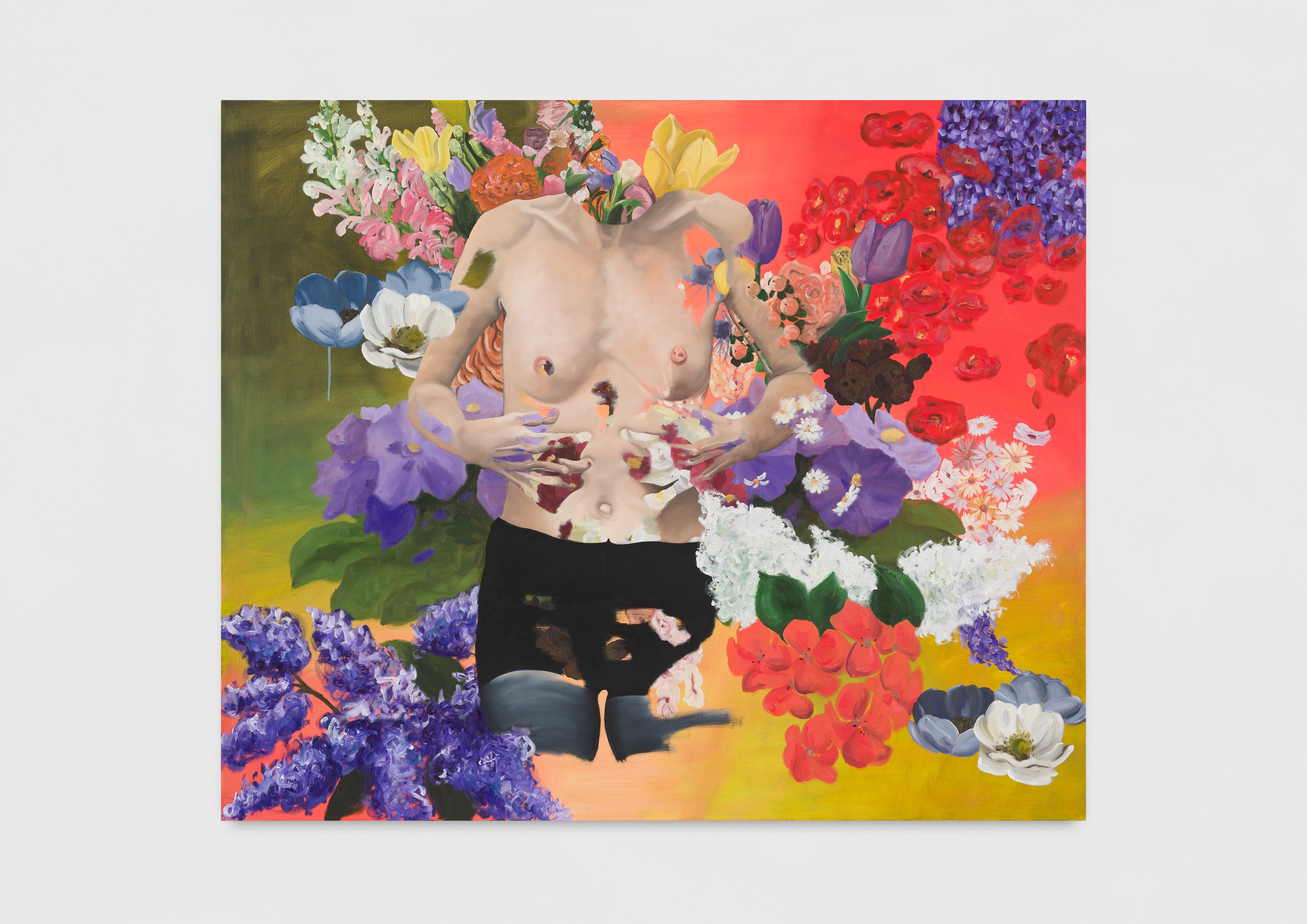Tina Braegger, Conny Maier, Jeanette Mundt, Kaspar Müller, Bunny Rogers, Marianna Simnett
Magpie, magpie why do you sigh?
July 10 – August 28, 2023

Jeanette Mundt
Another Punished, 2022
Oil on canvas
152.4 × 182.9 × 4 cm
60 × 72 × 1 1/2 in
The only bird that refused to enter Noah’s arc, the magpie spent the tempestuous journey perched on top of the vessel. Their intelligence and opportunism has earned them an inconstant reputation throughout ages. The appearance of a magpie, particularly in the pre-Christian era, symbolized luck, love, lasting prosperity, and auspiciousness, yet today they equally arouse intense superstition. A potent of doom when viewed alone, the magpie signifies deception and fraud as much as good fortune. The story of the magpie is a story of transformation and shifting values. Inspired by the classic nursery rhyme, the exhibition Magpie Magpie Why Do You Sigh brings together work by Tina Brägger, Petra Cortright, Kaspar Müller, Jeanette Mundt, Bunny Rogers and Marianna Simnett that resonate with the birds’ irrational affinity for shiny objects, as well as the mercurial nature of vacillating cultural values.
Tina Brägger’s paintings of the “dancing bear,” conceptually engages with how this counterfeit symbol of the American rockband the Grateful Dead inverts notions of official and unofficial, original and copy. Sponge-like, it absorbs myriad conflicting characteristics that it encounters through the process of its circulation, canonization, and its own fluctuating values. Gleaned from open-source collection images from art museums and “low quality” images from Twitter, Petra Cortright’s digital painting incorporates seemingly random images found online into a moody, richly textured new world. Kaspar Müller conceives of his mandala sculpture as an economic circle. Comprising glittering goods ordered online, the mandala, an offering, a memorial for a certain economic system and labor conditions: for what we produce and give each other for a living. The act of picking up and delivering is thereby an integral part of Müller’s mandala, which seeks to harmonize the chains of production and distribution that circulate these glistening things around the globe. Lacking a neck, face, and legs, the disembodied torso in Jeanette Mundt’s painting gives way in parts to reveal the ground of the painting beneath while, in some areas, the flowers that dominate the vividly colored composition seem to be blooming from body itself. Despite the painting’s seductiveness, it nonetheless exudes a slightly menacing air in its depiction of a body smothered by beauty. In the series Study for Joan Portrait (Tom Ford dress), Bunny Rogers hones in on the notion of celebrity. A celebrity is a cipher of sorts, a figure who is open to our projections of desire and aspiration. In the work’s exploration of stereotypical tropes of mediated femininity, Rogers consciously wields an interplay between desire and refusal: restraint, the withholding of one’s attention and affect, becomes a means of survival—an empowering act. Marianna Simnett’s crown is part of a series of bronze sculptures dedicated to daemon goddesses, fearsome figures who embody strength, madness, frenzy, and transformative power. By creating crowns for these figures, Simnett sanctifies their disruptive power, a shift in value that is materially reflected in the artist’s transformation of cheap plastic toys into precious regal attire.